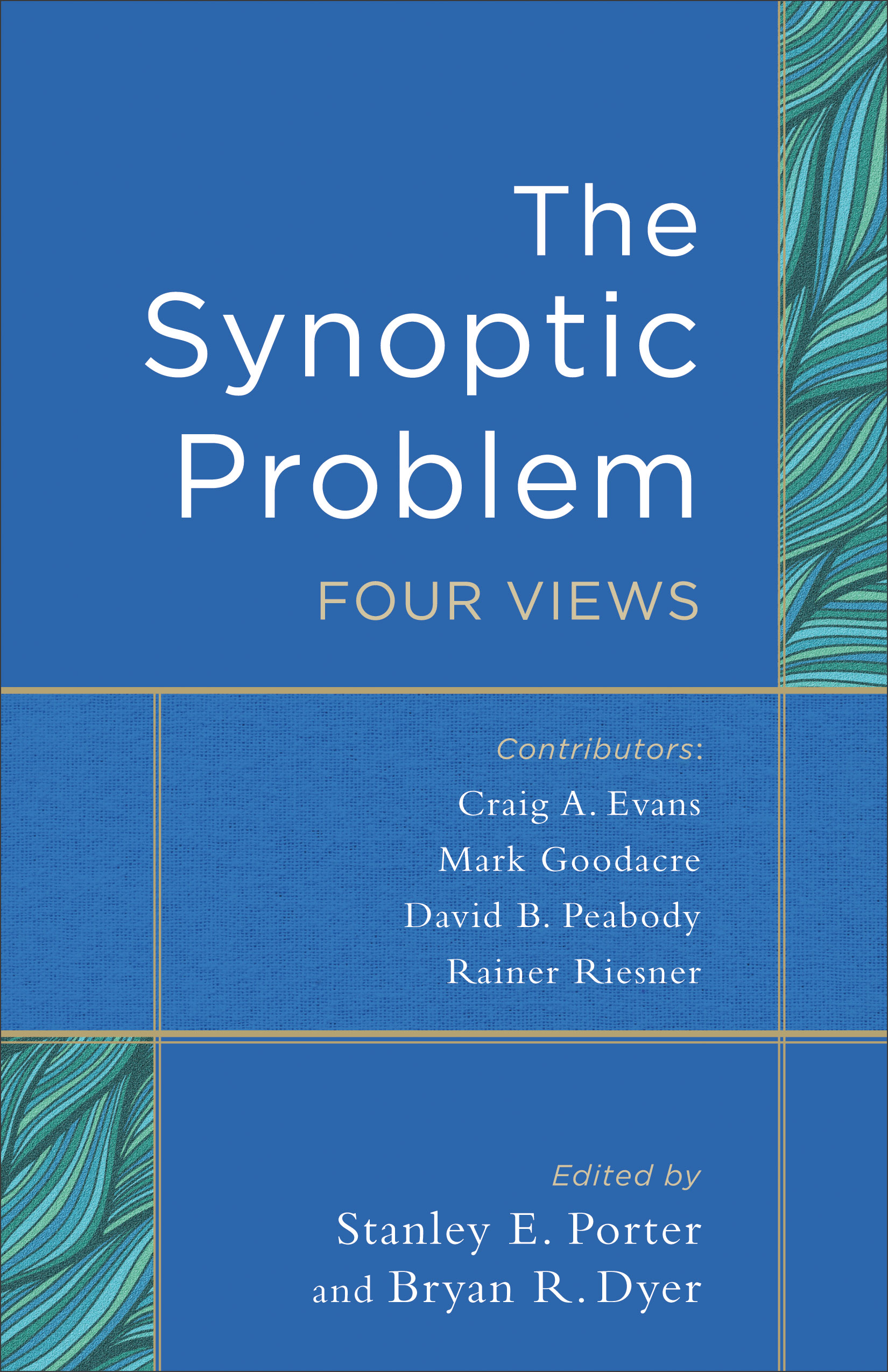Book Review: The Synoptic Problem
 Recently I had the opportunity to read a new book published in 2016, The Synoptic Problem. The “Synoptic Problem” is a phrase used in NT studies to refer to the comparison of the Synoptic Gospels (Matthew, Mark, Luke) and examine their relationship. This new book, edited by Stanley Porter and Bryan Dyer, gives an overview of four main views: the Two Source hypothesis, the Farrer hypothesis, the Two Gospel hypothesis, and the Orality and Memory hypothesis.
Recently I had the opportunity to read a new book published in 2016, The Synoptic Problem. The “Synoptic Problem” is a phrase used in NT studies to refer to the comparison of the Synoptic Gospels (Matthew, Mark, Luke) and examine their relationship. This new book, edited by Stanley Porter and Bryan Dyer, gives an overview of four main views: the Two Source hypothesis, the Farrer hypothesis, the Two Gospel hypothesis, and the Orality and Memory hypothesis.
Craig A. Evans writes to present the two source hypothesis, which teaches that Mark was the first gospel written, and Matthew and Luke were literarily dependent upon Mark. This hypothesis also teaches that where Matthew and Luke share the same details that are not mentioned in Mark, they are dependent upon another source, referred to as “Q.”
Mark Goodacre writes to represent the Farrer hypothesis. This theory holds that Mark was the first gospel written, but rejects the existence of the Q source. Thus, Matthew was dependent upon Mark, and Luke was dependent upon both Mark and Matthew.
David Barrett Peabody is the defender of the Two Gospel hypothesis. This view teaches that Matthew was the first gospel written, with Luke writing second, and Mark following chronologically in third place. In this theory, Luke utilizes Matthew (and other sources), and Mark utilizes both Matthew and Luke, but forms a more abridged version of the storyline. As Peabody mentions in his chapter, one advantage he has over the aforementioned theories is that church history almost unanimously indicates that Matthew wrote his gospel first.
Rainer Riesner concludes the four views with the Orality and Memory hypothesis. Riesner’s view is that literary dependence ought to be minimized (though not completely done away with) in light of the cultural emphasis on remembering oral traditions. Riesner writes that Jesus’ teachings were likely memorized and repeated in story sets, and these memorized traditions were the basis for the gospel writings. Riesner’s theory also includes space for some written sources, but emphasizes the memory and orality of that culture.
Stanley Porter and Bryan Dyer do an excellent job editing this book. Although this subject is one of the more technical subjects that can be discussed, all authors do an excellent job of writing concisely and in an interesting manner. The book is very reasonable in its length, and it also provides brief responses by each author to their fellow contributors. Overall, this book sets a high standard for amiable disagreement and discussion between scholars.
My only major critique is that there is no representative of conservative scholarship in the volume. The Eyewitness/Tradition view, although mentioned by Riesner, does not receive serious consideration as it is assumed to not be a serious consideration of the relationship of the Synoptic Gospels, even though it uses much of the evidence from the Orality and Memory hypothesis, and it was the main viewpoint for 1700+ years.
This will definitely be a “go to” work in discussing the relationship of the Synoptics for years to come in many schools. I recommend it on its basis of conciseness and brevity alone. It is an excellent introduction to the main issues involved.
Thanks to Baker Academic for the review copy. They are consistently coming out with valuable resources.